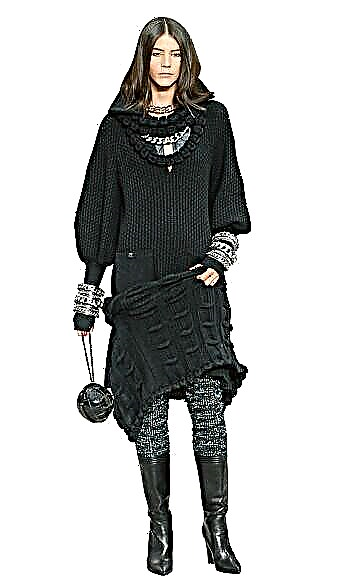The situational principle of making a wardrobe is also called rational. At the heart of this system is not a chaotic, but a logical principle of selecting things and sets.

In our age of “fast fashion” and the accessibility of clothing with a “full wardrobe but nothing to wear” situation, we encounter more often than ever. The situational, or rational, principle of forming a wardrobe is one of the ways that can help solve this problem. Most likely, this method can help you if you are prone to logic and respect a clear systematic approach.
What is wardrobe chaos and how to avoid it?
What is the essence of situational wardrobe?

The theory of situational wardrobe is based on calculations, logic and an individual look at the needs of a particular person.
This scheme suggests that for most of the possible situations for which we regularly draw up images, clothing should be selected in advance. At the same time, one must take into account how often this or that situation is repeated: the proportion of the clothes necessary for her from the total number will be appropriate.
For example, I am a business woman, I spend a lot of time in negotiations, I often go to the theater, and I prefer to go on vacation to Europe to visit all the museums where I have not been. The time given to work is 5-6 times longer than the time for rest, so my wardrobe will consist of 70% of business clothes for work, 10 + 10% of elegant clothes and a smart casual couch, 10% will be left for clothes for home and sports.
The second example: I am a freelancer and mom on maternity leave. I work at home, I spend 90% of the time with my child, but sometimes I try to get to interesting exhibitions, sometimes I go to the movies. The best vacation for us is to get out of the family to the sea and do nothing. Then my wardrobe for 80−90% will consist of comfortable, versatile, simple clothes suitable for home, walking, shopping and leisure. The remaining share - things that are suitable for a visit to a gallery, movie or museum, elegant as much as I want.
We make the perfect wardrobe: the rule of the pyramid
How to make a situational wardrobe?

The two examples cited reflect the essence of the theory of situational wardrobe quite generally. In fact, the system offers to take into account both seasons with certain weather conditions, and your personal style preferences in clothes, and changes in fashion. But the main thing is to paint all the situations, find out which clothes in the wardrobe are too many and which are not enough, and make the necessary changes to the contents of the cabinet.
Try to remember and write down all the possible situations in which you find yourself both regularly and rarely.
For instance:
- work in the office (5 days a week for 8 hours);
- walks / walks with children (3 times a week for 2 hours);
- Meetings with friends in a cafe (every 2 weeks, all evening);
- solemn occasions (2 times a year in the evening / 4−5 hours);
- family holidays (8 times a year, each for the whole day / 7-8 hours);
- Rest at home (3-4 hours on weekdays, 10-12 hours on weekends);
- trips to the forest with a tent (4 days a year);
- vacation by the sea (2 weeks a year), and so on.
The system assumes that all the time that we spend in one or another clothing will be fairly accurately painted and assigned to a certain type of situation. Having compiled a list, see if it is possible to combine situations for one type of clothing. For example: for the meeting with friends in a cafe and for a family holiday, approximately the same clothes are suitable; combine these cases. For clarity, it’s better to make a diagram by dividing the circle into sectors of the desired size (use some online charting program).
Let's say the situation diagram came out like this:

Now it's up to the wardrobe.Distribute things suitable for images in each situation (the same thing can be useful in different cases). You can remove all things from the closet (at the same time general cleaning can happen) and distribute it in heaps. You can sort through the clothes on the shelves and rail and make lists, the main thing is to do it not from memory, but live. Count the number of things in each heap / list and also make a chart.
For example, existing things are distributed as follows:

Compare the charts. Are the sector sizes the same? Congratulations, you are the owner of the same situational wardrobe. Is there a mismatch? This means that the wardrobe can be rationalized, getting rid of excess and buying or stitching the missing. What exactly and in what quantity should be removed from the wardrobe or added to it, the first diagram with a list of situations will tell.

In this comparison, we see that our character spends 60 percent of his time at work in the office, but there is definitely not enough clothing for such cases - she’s a little more than 30 percent in her wardrobe. Probably, a business / office wardrobe needs to be supplemented. But elegant dresses and other things for special occasions - more than 17 percent, and situations of these - a little more than a percent. Of course, things are needed to exit, and sometimes you don’t want to wear the same dress twice, but you should pay attention to the trend.
How to disassemble a wardrobe by the method of Marie Kondo
Situational wardrobe: pluses

Listing, charting, and counting things are activities not everyone is enthusiastic about. This way of organizing your wardrobe is primarily for those who think systematically and love to put everything on the shelves in the literal and figurative sense.
However, such a systematization gives many advantages.
+ Firstly, the wardrobe analyzed and changed according to the principles of situationality becomes more convenient and useful. It will become faster and easier to pick up sets and make decisions about what to wear: the basic situations are already thought out, for each there is a choice of clothes.
+ Secondly, the process of analyzing situations and things helps to make the acquisition of a new one more conscious and successful. Unnecessary clothes worn once or unused at all will become less.
+ As a result, the closet will be freer, and it will be easier to maintain order.
+ Among other things, such an analysis of your life and wardrobe can be an interesting psychological workshop. This is a way to look at everything a little from the outside, see how time is allocated, and draw conclusions.
We compose a basic wardrobe: 12 necessary items
Photo: makespace.com, blog.stylewe.com, stitchfix.com, paigeavenue.com



